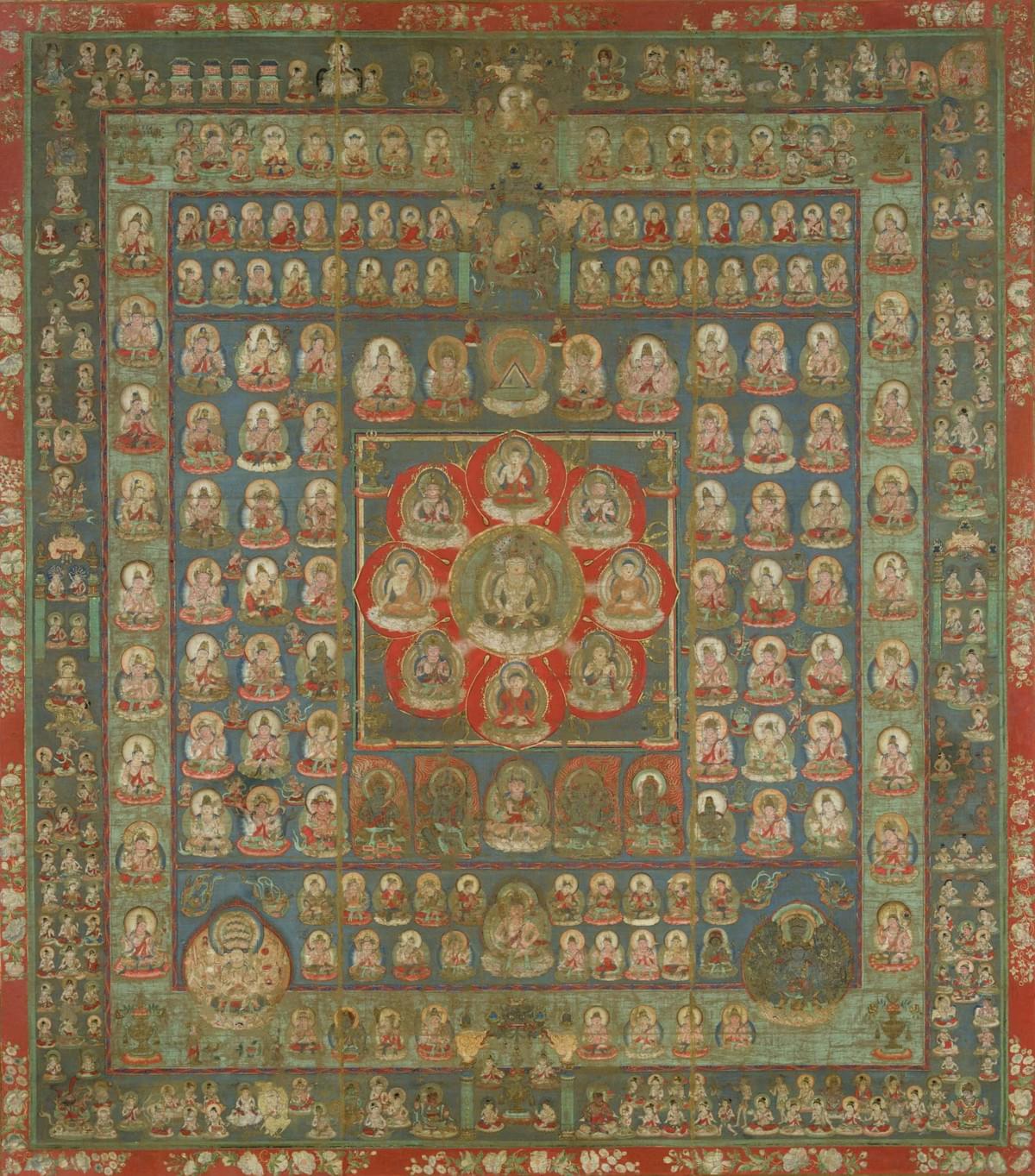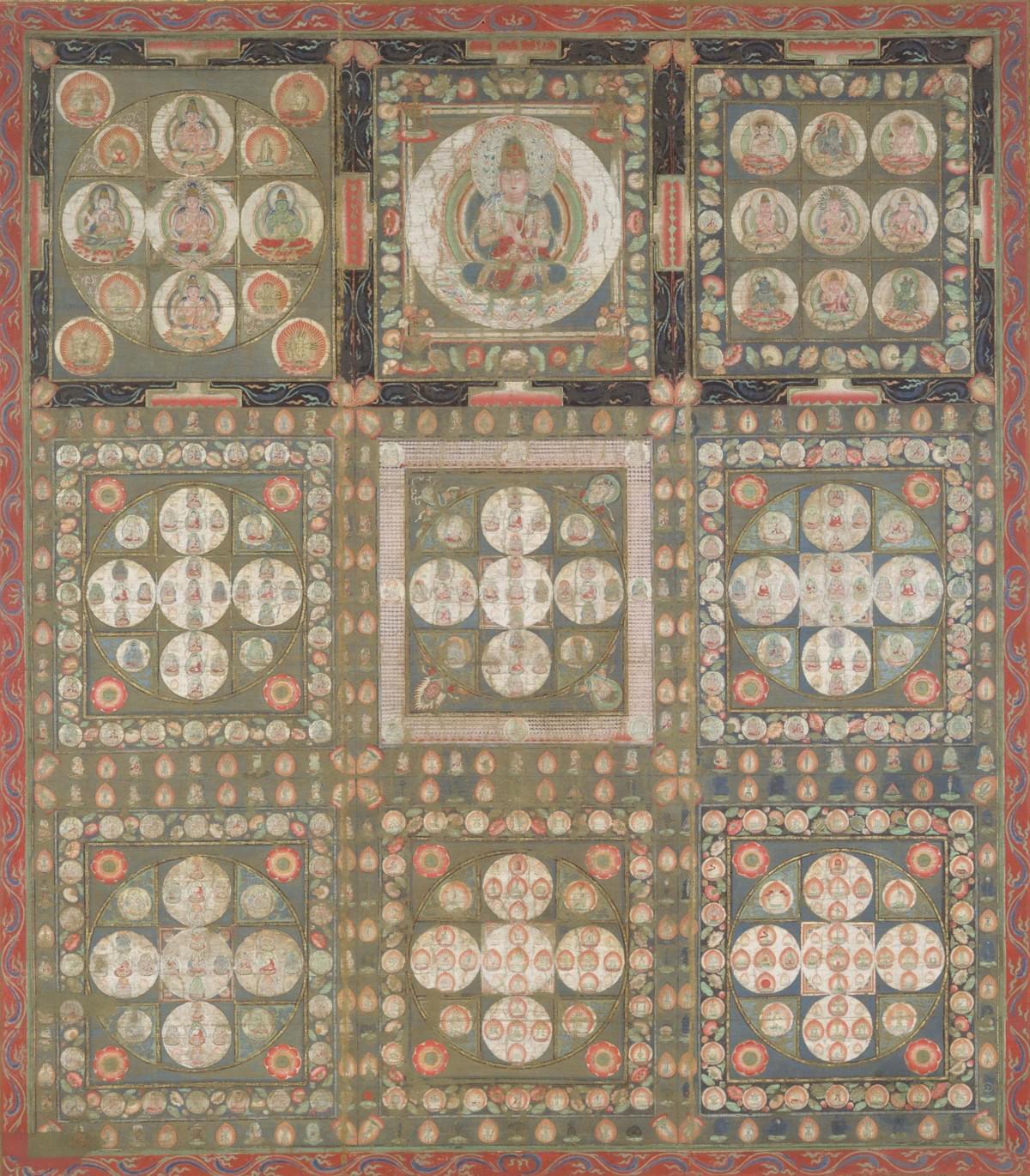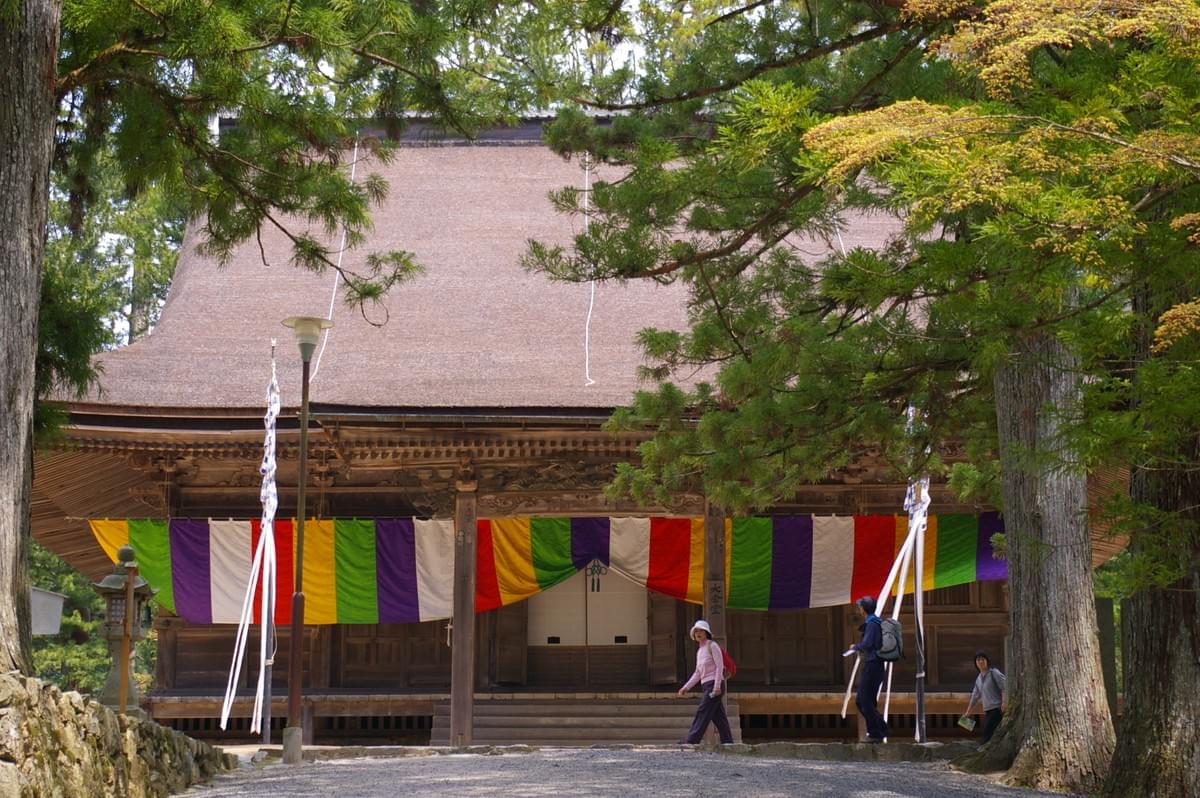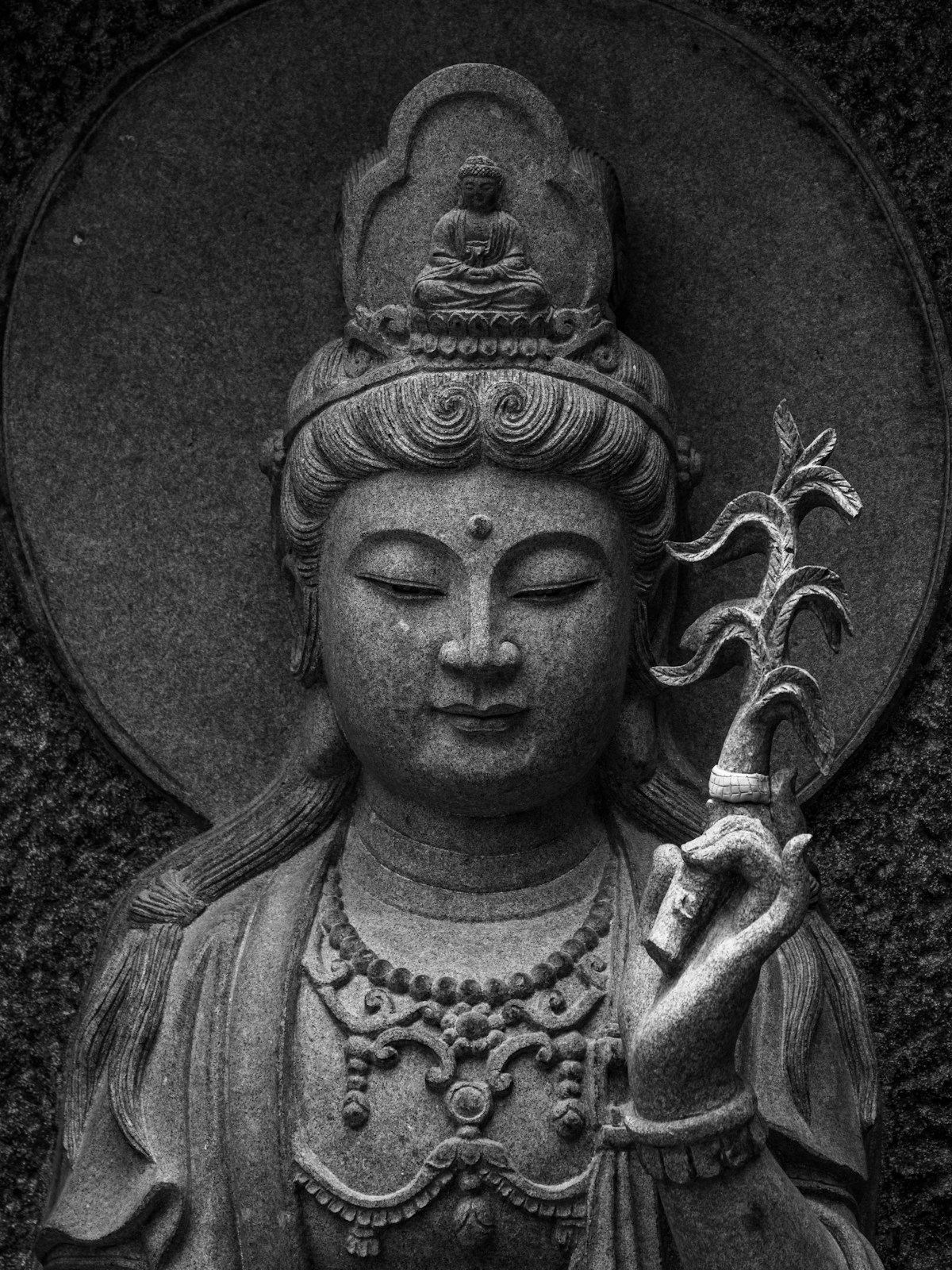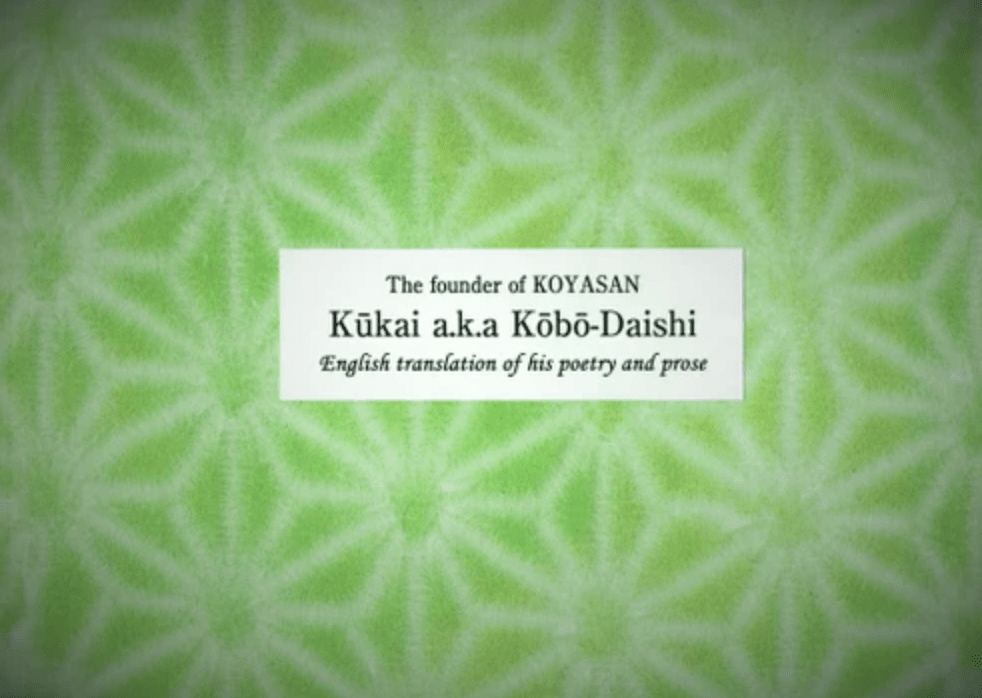
The founder of KOYASAN
Kūkai : 空海 posthumously called Kōbō Daishi : 弘法大師
Let's learn from the grand master propagated the Buddhist Teaching.
774–835
He was a Japanese monk, civil servant, scholar, poet, and artist.
He is the founder of the historic monastic community known as Koyasan in Japan and the originator of Shingon (mantra) Esoteric school of Buddhism.
Legend has it that he has not died but entered into an eternal meditation and is still alive on Mount Koya.

The originator of the pilgrimage circuit of 88 temples on Shikoku
Kōya-san and Kobo Daishi
Mount Kōya, Wakayama, JAPAN
Top of Mountain
Koyasan is located in Wakayama prefecture in western Japan. Kobo Daishi opened a monastery at the top of this 3,000-foot mountain. At the top of Koyasan are numerous temples, shrines, pagodas and religious halls. Kongobuji Temple is the head temple of the Koyasan Shingon sect, which has over 4,000 temples nationwide.
World Heritage
Registered as a UNESCO World Heritage Site in 2004, and then granted three stars in the Michelin Green Guide Japan in 2009, Koyasan is becoming increasingly popular with visitors from all over the world.
Eternal Meditation
In 816, after receiving permission from Emperor Saga, Kobo Daishi officially founded the seminary community of Koyasan. Since its induction, he dedicated himself to the work of creating an Esoteric Buddhism School while providing spiritual support for the common people. Kobo Daishi entered into eternal meditation on March 21, 835, surrounded by his devoted disciples. He is believed to be alive and continues to provide relief to those who ask for salvation.
密教と顕教
Esoteric teaching & Exoteric teaching
Kobo Daishi has the following views on esoteric Buddhism and other sects and religions (exoteric teaching.)
In exoteric teahing, it takes a long time to attain Buddhahood or reach enlightenment, but in esoteric Buddhism, it is preached to become a Buddha in this lifetime.
Even those who have committed serious sins that cannot be saved by exoteric teachings, or who are heinous or greedy, can be saved immediately by esoteric Buddhism.
He further states:
Exoteric Buddhism wipes away the dust outside the mind, while Esoteric Buddhism opens the warehouse of the mind and bestows treasures.
六大無礙常瑜伽
四種曼荼各不離
三密加持速疾顕
"The 6 elements (earth, water, fire, wind, space, and consiousness) do not exist independently,
but they influence each other and exist in harmony.
The 4 mandalas do not exist separately.
By performing the 3 mysteries of mudra, mantra and meditation that correspond to the body, speech and mind of the Buddha, one receives the blessing of the Buddha and attains Buddhahood in this very body quickly and manifestly."
A mandala is an iconography of Buddha's teachings and cosmic truths.
There are four types of mandalas that represent the teachings of Esoteric Buddhism.
Each of the four mandalas are interrelated and represent different aspects of the same teaching or truth.
1. 大曼荼羅
Concrete forms.
A depiction of Buddhas and Bodhisattvas, etc., which expresses teachings and positions by their appearance and placement. For example, there are the Kongokai Mandala and the Womb Realm Mandala.
2. 三味耶曼荼羅
Symbolic objects (swords, lotus flowers, treasures, etc.) and mudras.
A depiction of ritual implements and mudras possessed by Buddhas and Bodhisattvas, representing their merits.
Sanskrit characters as symbols of character.
Mandala that shows the mantra and Sanskrit characters corresponding to the statues of Buddha and Bodhisattvas, and expresses their sounds and meanings.
4. 羯磨曼荼羅
Actions or activities, three-dimensional mandalas.
A representation of the majesty and actions of Buddhas and Bodhisattvas.


即身成仏
Sokushin Jyobutsu
Reaching englightenment quickly & Becoming Buddha in this life
How to be able to conclude that one's enlightenment is real not only by thinking but also by facts based on experience.
三密 Sanmitsu
Sanmitsu is the basics of training in esoteric Buddhism, and it is a method that aims to become one with the Buddha through the body, mouth, and mind.
"身密 Shinmitsu" means that the symbol sign of the principal image of Buddha is tied with both hands and the posture is the same as the body of the Buddha.
"口密 Kumitsu" means that by chanting the mantra or darani, which are the words of the Buddha, the voice becomes the same as the voice of the Buddha.
"意密 Imitsu" is to become the same boundary as the Buddha's mind by seeing the Buddha's Sanmaji (meditation state) in the mind.
Meditation
阿字観 Ajikan
Ajikan is one of the few extant meditation techniques that is said to have been brought down from Tang Dynasty by Kobo Daishi Kukai.In the Shingon sect, one meditates by adjusting one's posture and breathing while gazing at the picture of the Sanskrit character representing Dainichi Nyorai drawn on the lotus flower of the moon ring. It was originally practiced as a training method for monks of the Shingon sect, and was passed down to Shingon sect temples. As meditation methods for training, there are the same methods such as ``Susokukan'', ``Asokukan'', and ``Gachirinkan''.
五智:GOCHI
5 Wisdom
The nature of the mind is naturally endowed with all the wisdom, and although the workings of that wisdom are innumerable, he preaches five particularly important wisdoms. The five wisdom is the wisdom of enlightenment in esoteric Buddhism, meaning the wisdom to understand the essence of things and judge right and wrong.
①大円鏡智:Great round mirror wisdom
Wisdom that reflects everything in this world without discrimination like a mirror.
Like a mirror, it is wisdom that clearly illuminates all laws (phenomena).
Asyuku Nyorai possesses this wisdom.
Controls the water. Water has the property of reflecting everything like a mirror,and the wisdom of the great round mirror is the wisdom that clearly illuminates all laws (phenomena).
Presides over blue. Blue is the color that reflects everything like a mirror, and it is also the color of Buddha's hair.
Traditional flags of Japanese Buddhism use green instead of blue.
Rules the East. East is the direction in which the sun rises, and the circle symbolizes perfection and infinity.The round shape of water is said to symbolize perfection and infinity. Water is fluid and adapts to any shape. Water is the source of life and is pure. A circle is a mathematical figure represented by pi and is an infinite decimal number.
②平等性智:Wisdom of equality
Wisdom to know that all things in this world are equal.
It is wisdom that embodies the equality of all laws (phenomena) beyond the distinction between self and others,
between good and evil.
Hosho Nyorai has this wisdom.
Rules the south. Winds from the south bring warmth.The wind has the property of touching everything and perceiving its movement and changes.
Presides over yellow. Yellow is the color of wealth and fertility, and the color of the Buddha's body.
The wind part is in the shape of a semicircle, which is said to symbolize harmony and change.A half circle would be a perfect circle if it had another half circle. Wind is a stream of air, invisible to the eye.
However, its power is so strong that it can shake trees and buildings and spread fires.
③妙観察智:Wisdom of wondrous observation
Wisdom to correctly ascertain everything in this world.
It is the wisdom of thinking deeply about the nature of all laws (phenomena) and their causal relationships.
Amida Nyorai has this wisdom.
Rules the west. West is the direction the sun sets, which governs the size of the fire.
Fire has the property of giving warmth and light equally.
Presides over red. Red is the color of love and mercy.
It is the color of the Tathagata's blood, and represents the effort to continue saving people with a heart of great mercy.
Fire is triangular in shape and is said to symbolize love and instability. Fire gives off heat and light and gives vitality to life. However, fire is difficult to control and can burn out or consume other things.Triangles are sharp shapes that represent stimulation or destruction.
④成所作智:Wisdom to get things done
It is the wisdom of using the proper methods and means to accomplish what is to be done.
Fukujyojyu Nyorai possesses this wisdom.
Controls the earth. The earth has the property of supporting everything and providing the conditions necessary for its realization.Presides over black. Black is the color of dark clouds and disasters, and the wisdom of creation that conquers evil and accomplishes what is to be done. The color of the Tathagata's robe represents the patience to endure all insults, persecutions and temptations without anger. Traditional flags of Japanese Buddhism use purple instead of black.
Rules the north. North is the direction of coldness and darkness, and because of the square shape of the earth, it is said to symbolize stability and the material world. The earth is the foundation of all things and is solid. Also, the earth is spread out in all directions and has four corners. It is a right-angled figure and has symmetry.
⑤法界体性智:Wisdom of the essence of the Dharma-realm
Absolute Wisdom that clarifies and integrates the essence of things.
It is the wisdom that intuitively perceives that all laws (phenomena) are "空" and that there is no discrimination or attachment.
Dainichi Nyorai possesses this wisdom.
Controls the space.
"空" is the root of all things, and Dharma Realm is wisdom that intuitively perceives the "空" of all Dharma (phenomena).
Presides over white. White is a perfect and pure color that includes all colors, and is the color of Buddha's teeth, representing purity, which cleanses evil deeds and the suffering of earthly desires with a pure heart.
Rules the center. "空", which is shaped like a jewel, is said to symbolize the truth and light of the universe. "空" is infinite and encompasses all things. Hoju is a Buddhist treasure, a shining object.
☆☆☆☆☆
In Japan, the position of the five Buddhas and the color of the body are related to the movement of the sun.
Dainichi Nyorai is the original color of the sun.
Asyuku Nyorai in the east is the blue of the predawn gloom.
Hosho Nyorai is yellow when the sun is in the south.
Amitabha is red at sunset.
Fukujyojyu is the darkness after the sun sets.
☆☆☆☆☆

十住心論
Jujushinron
Kukai clarified the development of bodhichitta (the desire to attain enlightenment and save others) by dividing it into 10 stages.
異生羝羊心(いしょうていようしん):The First Stage of Mind: The Unenlightened Sheep Mind
The stage of experiencing the suffering of the Six Realms with a mind full of worldly desires. At this stage, humans live according to their own desires, have no distinction between right and wrong, and may harm others for their own benefit. Its heart resembles an impure being likened to a sheep. Legend has it that male sheep are sexually active and will eat their own young.
愚童持斎心(ぐどうじさいしん):The Second Stage of Mind: The Foolish Child’s Moral Mind
A mind awakened to morality, logic, and Confucianism. At this stage, humans begin to live according to the ethics and laws of the world. But it is forced from the outside and does not lead to faith or enlightenment within. Such a mind is like an immature child trying to beautify himself by following the precepts of purity of mind and body and not eating after noon.
嬰童無畏心(ようどうむいしん):The Third Stage of Mind: The Infant’s Fearless Mind
The spirit of the supernatural, the realm of Indian philosophy and Lao Zhuang thought. At this stage, humans awaken to religions and philosophies other than Buddhism and try to distance themselves from the worldly. However, it is still only superficial knowledge and views, and does not touch upon real wisdom and compassion. Its mind resembles that of a young child called Doji, with fearless courage and confidence that comes from ignorance and arrogance.
唯蘊無我心(ゆいうんむがしん):The Fourth Stage of Mind: The Only Aggregate No-Self Mind
It is a mind awakened to Buddhism, a state of hearing the voice of Hinayana Buddhism. At this stage, human beings understand the basic teachings of Buddhism, the Four Noble Truths and Twelve Causes, and abandon the illusion that they and others have eternal selves. In addition, we can perceive the phenomenal world consisting of the five elements of five senses (color, receiving, thinking, action, and enlightenment). Such a mind recognizes only the phenomenal world and has a self-denial view called no-self.
抜業因種心(ばっごういんじゅしん):The Fifth Stage of Mind: The Eliminating Karma Cause and Seed Mind
It is the state of enlightenment in Hinayana Buddhism, which is the mind that becomes aware of the existence of the world of enlightenment. At this stage, man becomes free from the consequences and causality of his karma. We also turn our attention to the latent abilities and possibilities of seeds. Such a mind is a mind freed from karma and practices for its enlightenment.
他縁大乗心 (たえんだいじょうしん):The Sixth Stage of Mind: The Other-Cause Mahayana Mind
This is the stage when a bodhisattva's compassionate heart is born, and it is the state of Mahayana Buddhism. At this stage, a person develops a desire to enlighten not only himself but also others. You will also become aware of your relationships and interdependence with other people. Such a mind is one that has entered the Bodhisattva path, and understands the view that only the mind is real and the laws and characteristics of the phenomenal world.
覚心不生心 (かくしんふしょうしん):The Seventh Stage of Mind: The Awakened Mind Non-Arising Mind
It is the mind that realizes that everything in this world is "空" शून्य, śūnya' (everything is related and has no substance because there is nothing that can be called one's own body, essence or substance. The Buddhist middle view, called Mādhyamika in Sanskrit, denies the nature and substance of things, and all phenomena are interdependent and established relative to each other.) It is the realm of Mahayana Buddhism's Chukan and Sanron sects. At this stage, human beings awaken to the wisdom of true enlightenment and reach the state of unbornness, which transcends life and death. They also accept the contradiction that things that don't exist exist. Such a mind is one that approaches ultimate enlightenment, and uses a logical way of thinking that walks the middle path, called the Chudo or Sanron.
一道無為心(いちどうむいしん):The Eighth Stage of Mind: The One Way Non-Doing Mind
It is the state of Mahayana Buddhism Tendai sect at the stage of knowing that everything in this world has Buddha nature. At this stage, humanity knows that there is one path, the same path that all beings are headed. Also, learn to let nature take its course. This kind of mind is called ichido mui (the mind that all things are equal), nyojitsuchi jishin (the view that one has Buddha nature), and "空". Kushomukyōshin is the view that all things are "空" and without boundaries.
極無自性心 (ごくむじしょうしん):The Ninth Stage of Mind: The Ultimate No-Self Nature Mind
It is the state of the Kegon sect of Mahayana Buddhism at the stage of feeling the enlightenment of the universe. At this stage, humans learn that all beings have no self-identified substance or character. We also experience the harmony of all phenomena with each other and the absence of obstacles and conflicts.
秘密荘厳心(ひみつしょうごんしん):The Tenth Stage of Mind: The Secret Adornment Mind
This stage is the final stage in which humans become one with Buddha, and is the realm of Shingon Esoteric Buddhism.At this stage, humanity is exposed to the truth and beauty of the universe. Also, using images and symbols of Buddhas and Bodhisattvas, one purifies one's mind and becomes one with the Buddha. This kind of mind is the mind that has become a Buddha in this world, and it is a method of borrowing the voices and powers of Buddhas and Bodhisattvas called Shingon (Mantra), and uses a method called Sanmitsu, which integrates the body, mouth, and mind.
四重禁戒
The fourfold prohibitions of Esoteric Buddhism
These fourfold prohibitions are the highest vows in Esoteric Buddhism, and they express the commitment to live
according to the fundamental teachings of Buddhism. Esoteric Buddhism teaches that by keeping these fourfold prohibitions, one can increase one’s own and others’ happiness, and approach enlightenment.1. Not to abandon the true Dharma (the teachings of the Buddha)
2. Not to abandon the bodhicitta (the aspiration to attain enlightenment for the benefit of all beings)
3. Not to be stingy with the true Dharma (to share the teachings with others)
4. Not to act in a way that harms sentient beings (to act with compassion and wisdom)
十善戒
10 good deeds
The ten good deeds of the Mahavairocana Sutra are the ten kinds of virtuous actions that a bodhisattva should perform, as taught in the Mahavairocana Sutra, which is a major text of Mahayana Buddhism and Esoteric Buddhism. These virtuous actions correspond to the three karmas (body, speech, and mind) in a 3-4-3
pattern, and they are to avoid the ten evils of1. killing
2. stealing
3. sexual misconduct
4. lying
5. frivolous speech
6. slander
7. divisive speech
8. greed
9. anger
10. wrong views
The Mahavairocana Sutra teaches that by keeping the ten good deeds, one can develop one’s own Buddha-nature and attain the same wisdom and compassion as the Buddha.
The ten good deeds also correspond to the ten kinds of divine powers of Mahavairocana Buddha, and each virtuous action has a special merit and effect. The ten kinds of divine powersand the ten good precepts have corresponding virtuous actions for each divine power.
They are as follows.
1.
The power of knowing karma and its results: the ability to know the relationship between actions and their consequences, causes and effects.
2.
The power of knowing the superior and inferior faculties of sentient beings: the ability to know the strengths and weaknesses, suitability and unsuitability of sentient beings’ capacities.
3.
The power of knowing the states of meditation and liberation: the ability to know the states of concentration and emancipation, etc.
4.
The power of knowing where sentient beings are going: the ability to know the causal actions that make sentient beings go to hell or nirvana, etc.
5.
The power of knowing when one’s own and others’ defilements are exhausted: the ability to know when one’s own and others have attained nirvana.
6.
The power of knowing one’s own and others’ future lives: the ability to know one’s own and others’ future existences.
7.
The power of remembering one’s own and others’ past lives: the ability to recall one’s own and others’ previous existences.
8.
The power of knowing the various dispositions of sentient beings: the ability to know the characters and temperaments of sentient beings that have been habituated since beginningless time.
9.
The power of knowing the various distinctions of sentient beings: the ability to know the differences among sentient beings’ joys and sorrows, etc.
10.
The power of knowing what is right and what is wrong: the ability to clarify the difference between reason and unreason.
The correspondence between theten kinds of divine powers and the ten good precepts shows the relationship
between the Buddha’s wisdom and sentient beings’ virtuous actions. The Buddha can see through sentient beings’ states and actions, but sentient beings cannot realize their own states and actions. The Buddha teaches sentient beings to keep the ten good precepts, so that sentient beings can improve their own states and actions, and approach the Buddha’s wisdom.衆生秘密と如来秘密
The secret of sentient beings and the secret of the Buddha
They are two important concepts in Esoteric Buddhism.
The secret of sentient beings means that we all have the Buddha-nature, which is the true nature of reality
and the source of all virtues, but we are unaware of it due to our ignorance and afflictions. The Buddha teaches us various teachings and methods to help us awaken to our own Buddha-nature.The secret of the Buddha means that the Buddha expresses his own enlightenment and the state of truth through his teachings and words. The secret of the Buddha is profound and difficult to understand for
us, but the Buddha shows us various forms and symbols to help us approach his wisdom. The secret of sentient beings and the secret of the Buddha are interrelated, and by understanding both, we can advance on the path of Buddhahood.Excerpts from the Book
[Words from Kūkai a.k.a Kōbō-Daishi]
A collection of his poems and prose translated into English
"Good and Evil"
"Nothing has a definite nature, so people cannot be purely evil.
Even so-called evil people will aspire to follow a moral path when they feel a sense of community."
- 'Hizouhouron'
"Rich and Poor"
"The rich are trapped by fear of losing their property; the poor are trapped by hunger and cold."
- 'Rishukyoukaidai'
"Enlightenment"
"Enlightenment is not far off; it has been present within the mind since birth.
The true self is not outside the body.
Where should I seek it then, without discarding the body?"
- 'Hannya shingyo hiken'
"Attaining enlightenment in this very existence"
"In Esoteric Buddhism, there are practices known as the Three Secrets.
The first is Body Practice, that is,to make symbolic signs using the fingers to be one with the holy Buddhist saints.
The second is ..."
- 'Hizo horon'
"Esoteric Buddhism"
"Esoteric Buddhism is a portal that transcends all space in an instant.
With it, you can surely attain Buddha-hood whilst you are alive."
- 'Jujushinron' written by Kūkai a.k.a Kōbō-Daishi
Page 31
"Farewell"
"Although it is said that it is impossible to be disturbed by anything upon reaching enlightenment,
I could not help but cry upon bidding farewell to a loved one."
- 'Shouryoushu'
"Ehical Man"
"An ethical man thinks of others first and himself last."
- 'Sanmayakaijyo'
"Object"
"Perception of an object varies according to the mind.
When the mind is polluted, the object becomes tainted."
- 'Shouryoushu'

Words from Kūkai a.k.a Kōbō-Daishi
A collection of his poems and prose translated into English
Available at Ekoin Temple in Koyasan. ¥1500
Or you can buy an e-book from Amazon kindle. ¥1250
Enjoy these classic masterpieces!
Copyright © 2023 words-from-kukai.com All Rights Reserved.
Images on this website are taken by the creator and quoted from Wikipedia.


